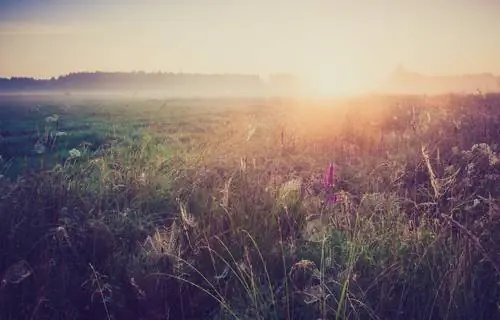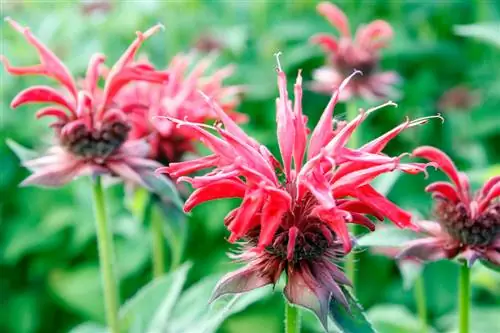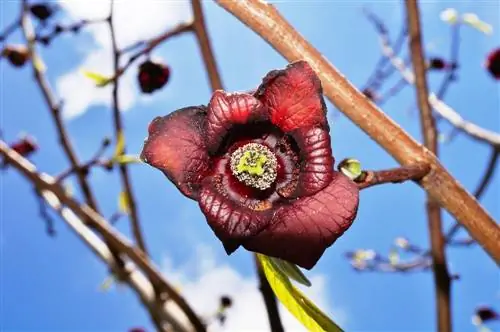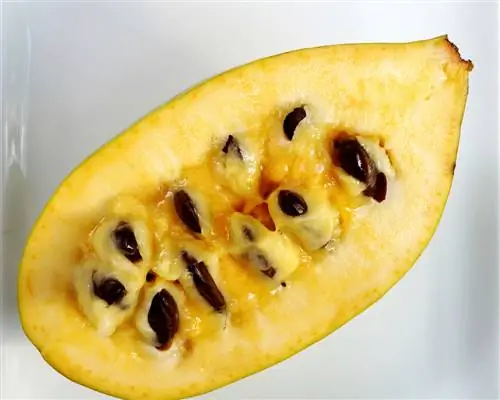- Author admin [email protected].
- Public 2023-12-16 16:46.
- Last modified 2025-06-01 06:02.
Warm sunshine, crystal clear air, romantic wafts of fog and flying spider threads leave no doubt. With these picturesque attributes, Indian summer takes hold as a feast for the senses. The furious season finale in nature is much more than a pleasant weather phenomenon. Read this guide to find out what Indian summer is all about.

Where does the term come from?
A strange word goes around in Germany in autumn: Indian summer. At least from mid-September to mid-October, the term gives many people a headache, when summer weather once again pushes away the beginning of autumn. The word contains three components that actually have little to do with each other: summer, women and old. Why is it still called Indian summer?
There is no scientifically reliable explanation of the origin and meaning of the term. What is certain is that Indian summer has been mentioned in written language since the beginning of the 19th century. At that time, the year was only divided into two seasons: summer and winter. Spring was called “young women’s summer,” and autumn was called “old women’s summer.” Today, a variety of theses strive to provide a comprehensible explanation for the origin and meaning of the word:

Spinning threads symbolize silver hair
A characteristic sign of Indian summer are the delicate flight threads on which young spiders float through the air. The spider threads are reminiscent of the long, silvery-gray hair of elderly women, which suggests the term Indian summer.
Another explanation relates to the cobwebs that canopy spiders make from these flight threads. In Old German, the term “Weiben” means knotting or weaving spider threads. From this perspective, the word component female in Indian summer does not refer to older women, but rather to the busy activity of spiders. The term therefore means: late summer of cobwebs.
Linguists discuss controversial issues
From the point of view of the recognized etymologist Elmar Seebold, a secondary interpretation and origin is more reasonable. As a result, summer looks nice again towards the end before saying goodbye old, weak and toothless. This creates the association of a short, second spring of aging women, before the final beginning of the twilight of life.
Wolfgang Pfeifer contradicts this interpretation in the etymological dictionary of the Germans and advocates the traditional interpretation of flying spider threads as the hair of old women. The Brothers Grimm pragmatically resolve the conflict over the origin of the term Indian summer. In the revised version of their German dictionary, the origin of the word is simply defined as unclear. This opens the door to almost all mystical, imaginative, paradoxical and rational interpretations.
Excursus
No metaphorical degradation of seniors
In 1989, the Darmstadt regional court found that the term Indian summer is neither misogynistic nor age-discriminatory. The lawsuit was filed by a 77-year-old woman from Darmstadt who felt her personal rights had been compromised by the expression. The offended lady assumed that the traditional term symbolically denigrated her age group. The judges did not accept this argument, so Indian summer was allowed to keep its name.
When does Indian summer begin?
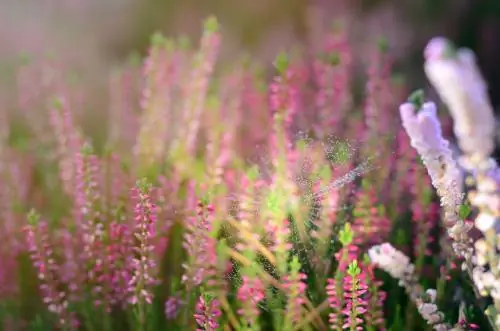
Indian summer is not in summer at all, but usually begins at the beginning of autumn
You won't find a fixed date for the start of Indian summer in the calendar. What is certain is that the date usually coincides with the beginning of autumn. Progressive global warming and incalculable weather changes have so far left their mark on the late summer imperial weather. What scientists soberly call a meteorological singularity proves to be astonishingly consistent. For more than 200 years, the period of good weather has reliably sweetened our farewell to summer at the end of September. The following table shows when Indian summer took hold in Germany and Austria in recent years:
| 2016 | 2017 | 2018 | |
|---|---|---|---|
| Germany | 23.09. | 21.09. | 17.09. |
| Austria | 09.09. | 22.09. | 06.09. |
In 2019, the wonderful weather didn't take long to wait either. The Indian summer bathed Germany in its golden sunlight from September 9th. Apart from a few small interruptions, the good weather lasted until the Oktoberfest in Munich began. In Austria, Vienna.at announced on September 20th: Indian summer is approaching. Until October 1st, the wonderful weather attracted enthusiastic people to hike and enjoy the outdoors.
Tip
Indian summer is the best time to plant perennials and trees. From the end of September to mid-October, young plants root vigorously and quickly in the soil warmed by the sun. Furthermore, now is the ideal time window for preparatory soil work when planting a new vegetable patch.
Why do spider threads fly around?
Tiny canopy spiders and dwarf spiders produce gossamer threads as a means of transport to travel to a suitable location for a web. For this purpose, the millimeter-small spiders climb to a high position. When the right wind comes up, they release a spinning thread and use it to sail for miles through the air. The low weight combined with the buoyancy of warm air guarantees that the clever travelers fly far and high.
The filigree webs are particularly visible to the human eye when autumnal morning dew gets caught in them and glitters. The ingenious airships made of spider threads appear en masse in late summer, so that they have established themselves in the general consciousness as a characteristic symbol of Indian summer.
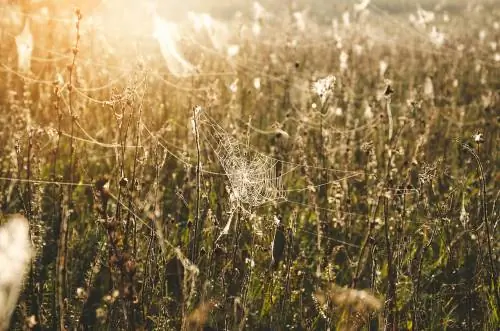
Tiny spiders create the beautiful spectacle of Indian summer
Meteorological singularity colors the foliage
From the point of view of meteorologists, Indian summer is the so-called “normal weather event”. In technical jargon, the magnificent period of good weather in late summer is also referred to as a meteorological singularity. This refers to a weather situation that is very likely to occur, as is typical for Indian summer. Since weather records began, a high pressure area with cool, dry, continental air has extended over Central Europe in 5 out of 6 years.
In the morning hours the thermometer is in the single digits. During the day the temperatures rise to well over 20 degrees Celsius. As a result of the striking fluctuations, trees and bushes appear to put on their colorful foliage overnight. Under ideal conditions, the beautiful weather lasts for several weeks and conjures up a “Golden October”.
Comparable weather phenomena in the form of a meteorological singularity are Ice Saints, Sheep Cold and Dog Days.
Myths and Legends
There are a variety of myths and legends surrounding Indian summer. The focus is on the delicate spider threads and cobwebs that have inspired imaginative stories for centuries. According to an early Christian legend, the silvery threads are the yarn from the cloak that the Virgin Mary wore when she ascended to heaven. Another sacred legend tells that Saint Mary, together with 11,000 virgins, covers the country with silk threads every year. For this reason, the magical cobwebs between twigs and grasses are called “Mariensilk”, “Marienhaar” or “Marienfäden”.
Our ancestors were convinced that elves and dwarves were busy weaving at night when cobwebs glittered in the forest and fields early in the morning. Popular belief interprets the characteristic cobwebs as a good luck charm. It promises great fame and prominence when the delicate webs attach themselves to a person's clothing. If late summer spider threads get caught in the hair of young girls, a wedding will soon be celebrated.
Background
Indian summer - Indian summer speaks English here
In North America, the term Indian summer summarizes the two European weather phenomena Indian summer and Golden October. Dry, warm weather and blue skies create a furious color spectacle on the mountain slopes from Canada to New England. In good years, the natural spectacle extends over a long period from the beginning of September to November. The floral standard bearer for the autumn colors is the sugar maple (Acer saccharum), a common tree species in New England that is also enjoying increasing popularity in Europe.
Weather phenomenon and farmers rule
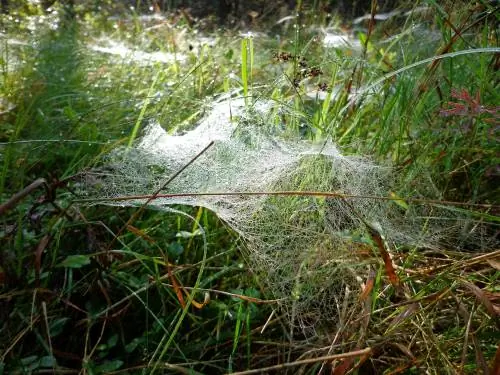
The more spiders there are in autumn, the harder the winter will be
As a late summer weather phenomenon, Indian summer is reflected in numerous farming rules. We have compiled some of the most well-known sayings about rural weather forecasts for you below:
- When spiders crawl in droves in September, they smell a harsh winter.
- If October is warm and clean, a harsh winter is coming.
- Warm October indeed brings a mild February.
- If October is sunny, there will hardly be any snow before Christmas.
- All Saints Day brings summer for old women, is the last seller of summer.
- If it is pure on All Saints Day, Indian summer occurs.
- Saint Leopold is often fond of Indian summer.
Opinions can be divided about the accuracy of pawn rules. After all, sayings such as “Summer says Amen in the name of Mary” and “If Matthew has nice weather in the house, it can last another four weeks” encouraged the Munich Oktoberfest to be brought forward over the years from mid-October to the end of September.
Places celebrate Indian summer
The sun-drenched days of Indian summer must be celebrated before the first frost drives people indoors. According to this motto, resourceful places in Germany organize a big festival every year to say goodbye to the beautiful season in a fitting way. The main players are Kleinw altersdorf in Saxony, Rodenberg in Lower Saxony and Burg Stargard on the B altic Sea, whose activities we present in more detail below:
Kleinw altersdorf
Kleinw altersdorf has made a name for itself with its Indian Summer Festival, which is dedicated to a special theme every year. In 2019, the motto of the event was “Great Climate”. There was a lot of excitement in the town over three days with a varied program for every generation. The diverse offerings at the 24th Indian Summer, which will certainly be followed by many more festivals, ranged from a cheerful Meppel box race to a big dance evening to a cozy coffee chat.
Rodenberg
Every year at the end of September, the whole town in Rodenberg in the Schaumburger Land is on its feet and celebrates Indian summer. A colorful array of different attractions transforms the center into a late summer adventure park for the whole family. Sales stands present regional products, restaurants entice visitors with selected speci alties and clubs demonstrate their skills. Fanfare corps, music clubs and bands perform on a large stage. Every year the organizers come up with something new to excite visitors from near and far about the Indian Summer Festival.
A meeting point for young and old at the end of September is Burg Stargard with its traditional Indian summer market. On the last weekend in September, the romantic hilltop castle on the B altic Sea invites the whole family to stroll and feast. The attractions are accompanied by a historic craft market and wine festival.
Beautiful and funny sayings for Indian summer
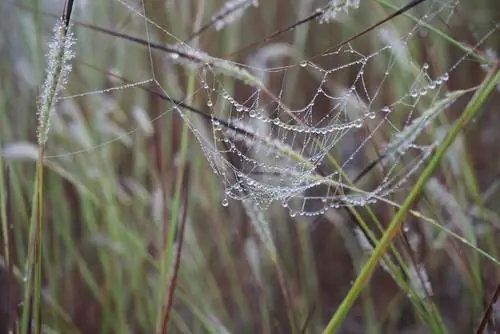
Many books, proverbs and poems deal with Indian summer
The pleasant conditions in Indian summer are a welcome opportunity for funny sayings. Dive into a collection of selected flashes of inspiration, sayings, jokes and punchlines about Indian summer:
- The dreams of spring are made into jam in Indian summer.
- In Indian summer, leaves sunbathe to turn nice and brown.
- Autumn is the spring of winter.
- In Indian summer, Mother Nature refuses to turn the page to autumn.
Since the Darmstadt verdict, the following funny saying has been doing the rounds: Can you still say Indian summer? Or does it now mean: feminine natural state without a menstrual background?
Book with the title Indian Summer
The term Indian summer turns out to be a source of inspiration for writers and poets. The following table demonstrates the wide range of reading material based on the late summer weather phenomenon:
| Title | Sub titles | Category | Author | EAN/ISBN |
|---|---|---|---|---|
| Indian Summer | Theodor Fontane's first case | historical crime novel | Frank Goyke | EAN:9783898095112 |
| Indian Summer | Post-menopausal report | Women & Psychology | Julia Onken | EAN:9783406628467 |
| Indian summer in April | Cheerful novel | Contemporary Literature | Ingrid Geiger | EAN:9783423208352 |
| Indian Summer | A Lake Constance crime thriller | Germany | Ulla Neumann | EAN:9783886273843 |
| Sniffing out in Indian summer | Marlene's Soul Guide | Contemporary Literature | Rita Kasparek | EAN:9783739214375 |
| Indian Summer | Novel | Ruth Eder | EAN:9783426651421 | |
| Indian Summer | Just a human | Trilogy | René Bohn | ISBN:1520604106 |
| Indian Summer | Poems | Poetry | Christa Gabora | ISBN-13: 978-3934969124 |
| Windy Indian Summer | Novel | Hanne Oppermann | ISBN-13: 978-3833432743 |
Breathtaking pictures of Indian summer present high-quality wall and table calendars, such as “Indian summer” by Bettina Blaß, published by Calvendo-Verlag.
Frequently asked questions
What does SOKO Munich have to do with Indian summer?
Title of one of the most famous episodes of the popular crime series SOKO Munich is 'Indian Summer'. On the way to the sauna with two friends, Marianne Berg is hit by a car and dies instantly. The driver flees. Initially, the investigators assume that the attack was politically motivated. As the crime progresses, it turns out to be a complicated web of lies, deceit and secrets. When a second woman is murdered, the situation comes to a dramatic head. The episode 'Indian Summer' was first broadcast on March 6th, 2017 on ZDF.
In my senior group, I regularly organize exercises to promote memory retention. How can I use the Indian Summer theme as a memory exercise?
The Bavarian State Association KDFB (Catholic German Women's Association) recommends the following exercise for training long-term memory, coordination, word finding and movement: The group sits or stands in a circle and throws a tail ball to each other. Whoever catches the ball must name a yellow or red flower that blooms between March and Indian summer. All flowers that bloom in Indian summer are mentioned as variants.
Which well-known poets have dedicated a poem to Indian summer?
Erich Kästner 'September' and Eduard Mörike 'September Morning' make us dream of Indian summer. The beautiful poem 'Indian Summer' by Norbert van Tiggelen, a German poet known as Gelsenkirchen, comes from more recent times. The riddle poem 'A Magical Day in Autumn' written by Elke Bräunling is a lot of fun to read.
Where can I find a nice, free old woman gif?
A popular source for attractive old woman gifs for free is 123.gif.de/herbst. There are more than 130 creative pictures, animations, animations and images to discover on the topic without having to open your wallet. You will also be at picmix.com quickly find what you're looking for. A visit to pinterest.de should also be worthwhile, provided you sacrifice a few minutes in advance to open a free account.
Which types of trees make Indian summer particularly colorful in the garden?
Anyone who includes proven autumn colors in their planting plan will be rewarded with an extra colorful Indian summer. Prime examples of furious foliage coloring from late summer onwards are maple species such as cinnamon maple (Acer griseum), Canadian maple (Acer saccharum) and many Japanese maple varieties. The sweetgum tree 'Oktoberglut' (Liquidambar styraciflua) does what the name promises. On the ginkgo tree (Ginkgo biloba), golden yellow leaves compete with the sun. In the small garden, deciduous shrubs provide colorful accents, such as blood barberry (Berberis thunbergii 'Atropurpurea'), witch hazel (Hamamelis), glossy leaf bush (Photinia) and the cork wing bush (Euonymus). The sunnier the location, the more spectacular the play of colors.
Indian summer on the balcony. With which plants does it work?
When there is a lack of space for majestic trees and expansive shrubs with glowing colors in Indian summer, magnificent perennials are there to transform the balcony into a late summer floral fairytale. The winter aster 'Indian summer' (Chrysantemum) is not short on bright yellow flowers. In the large pot, bearded flower 'Summer Sorbet' (Caryopteris clandonensis) and suneye 'Summer Nights' (Heliopsis helianthoides) celebrate their floral version of Indian summer on the balcony. Ornamental grasses with autumn colors round off the appearance in a picturesque way, such as pennisetum grass (Pennisetum alopecuroides) and silver ear grass (Achnatherum calamagrostis).
Tip
The Old Women's Mill from Tripsdrill is a tongue-in-cheek variant of the traditional term Indian summer. The mill is the landmark of Germany's first adventure park in Baden-Württemberg. According to legend, there was a mill there in ancient times where old women were ground young again. Today's Old Women's Mill invites you to a happy slide and is said to still be able to “mill young” women of senior age.

